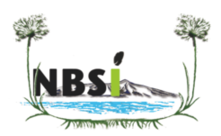Hell's Gate National Park
Hell's Gate is immediately to the south of Lake Naivasha, (Figure 1) starting as a series of vertical basalt cliffs, rising either side of grassland savannah dominated by the low shrubs Whistling Thorn Acacia (Acacia (now Vachellia) drepanolobium) and Leleshwa (Tarchonanthus camphoratus). The grasslands hold typical plains game, the commonoest buffalo (Syncerus caffer) and kongoni (Alcelaphus buselaphus). There is spectacular scenery, including lava plugs from eroded craters and sheer cliffs where vultures nest
These give way to a steep, narrow gorge, threading southwards into the plains below. Water seeps through the rocks of the gorge and in rainstorms, cascades down into the gorge from the land above, so the base of the gorge is a sandy, unstable stream channel. Lower down there are hot springs.
The gorge was created and eroded by the outflow waters from a large lake, that covered what are now lakes Naivasha, Elementeita and Nakuru, in the last East African pluvial period, called the Gamblian, corresponding with the last Northern Hemisphere glaciation, about 30,000 years ago (Fig 2)
To the immediate west of the gorge the land rises to a series of extinct volcanoes their flanks dotted with steam vents; one of them, called Olkaria has given its name to the first geothermal power station in Africa. Sadly, this plant, now five due to the Word Bank's, and many other countreis' investment in construction, lies right in the middle of Hells Gate National Park. Both the wildlife and the Maasai people who live outside the Park, have suffered from the pollution, the noise, the speeding traffic on fine tarmac roads that comes with "environmentally-friendly" power, such the future of the Park is in serious doubt.



